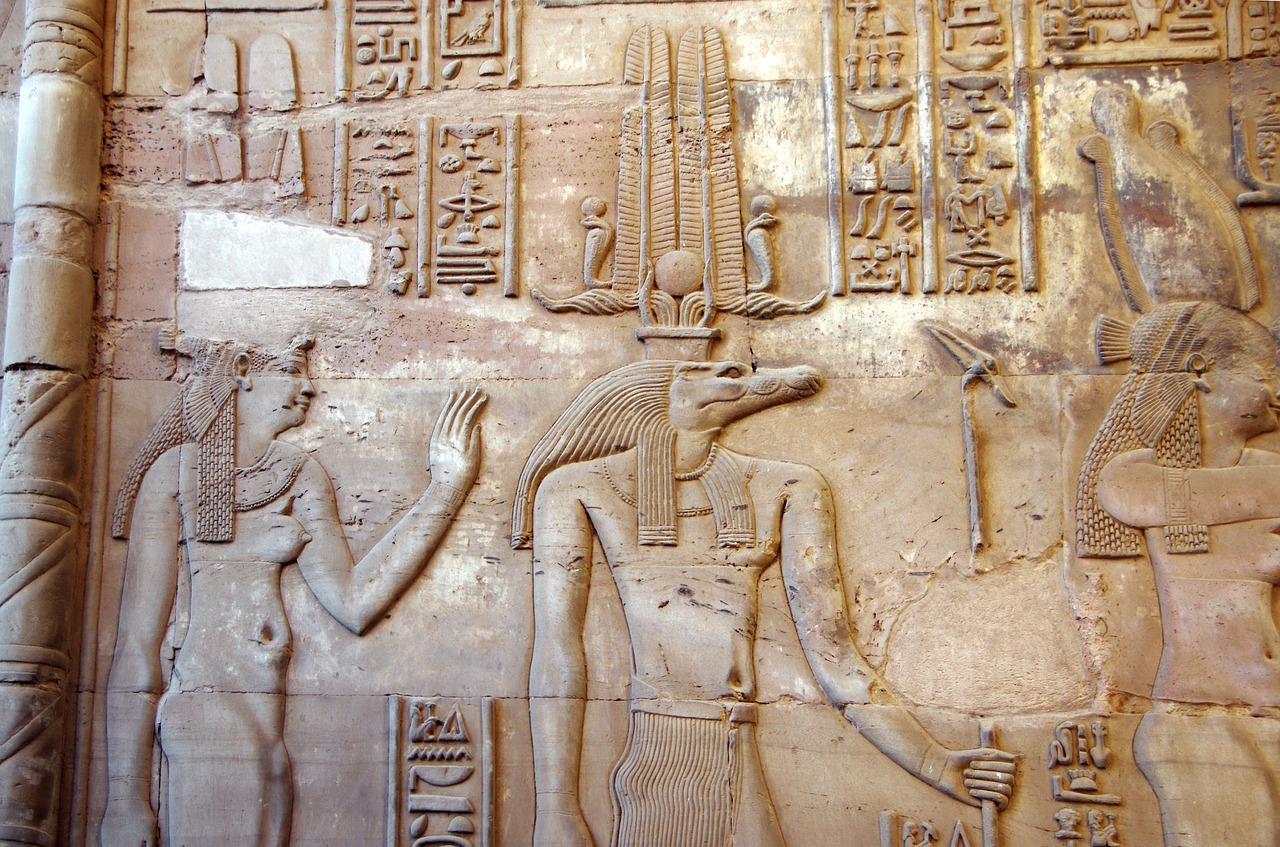The Crocodile Deity Sobek
The deity Sobek, often recognized for his distinct appearance, is a prominent figure within the Egyptian pantheon. Represented either as a man with a crocodile’s head or as a full crocodile, Sobek’s influence was closely tied to the Nile River. According to one legend, the river itself was formed from his perspiration.
Sobek’s worship spanned the entirety of ancient Egyptian history, commencing in the Old Kingdom and continuing through the Roman period. He first appears in historical texts during the Old Kingdom, specifically within the Pyramid texts (spell PT 317), where he is referred to as the offspring of Neith and Seth. Known as the “Rager,” Sobek was perceived as a fierce and formidable god during the early years of the Egyptian Dynasties, characterized by traits such as aggressive behaviour and a penchant for destruction. His titles echoed his menacing nature, indicating a love for theft, while also establishing his dominion over water.
Over time, Sobek transformed into a protective figure, using his powers to ward off malevolent forces. As a guardian against the perils associated with the Nile, he eventually became a protector of souls in the afterlife, restoring the senses of the deceased. He was also linked to the healing of Osiris, the dismembered god whose body was scattered by his brother Set in a quest for power. It naturally followed that Sobek could be viewed as a deity capable of restoring bodily integrity in the afterlife.
Sobek also held a significant royal association, symbolizing the might of the pharaoh and serving as the patron for the royal military. His connection with the crown was marked by the uraeus worn atop his head, signifying his role in safeguarding the ruler from malevolent influences. The term “sovereign” was represented with crocodilian symbols, and many pharaohs incorporated “Sobek” in their names. His protective capacities extended not only to kings but also to the deities of the afterlife, particularly Ra and Set. Furthermore, Sobek was associated with the fertility of the Nile and played a part in cosmic creation myths, especially during the later Dynastic era. He was revered as a manifestation of Ra, emerging from the primordial waters to help create the earth, and was known as Sobek-Ra, often depicted with the sun disk on his head.
Cult Centers of Sobek
Sobek’s veneration was particularly prominent in Upper Egypt and Nubia, as well as within the Fayum region near the Nile Delta. Numerous towns in Fayum had their localized versions of Sobek that people worshipped, with Pharaoh Amenemhat III notably boosting the region’s reverence for Sobek during the 12th Dynasty. The most renowned center of Sobek worship was Crocodilopolis, where a temple constructed during the 12th Dynasty at Medinet Madi was dedicated to him, his consort Renenutet, and Horus. Sacred crocodiles were tended to within the temple grounds, revered as embodiments of Sobek. They were well-fed, sometimes adorned with precious ornaments, and upon death, they were mummified and interred in a designated holy cemetery.
In Kom Ombo, there was another temple dedicated to Sobek, known as Per-Sobek, or House of Sobek. In this location, Hathor served as Sobek’s consort.
Types of Crocodiles
In ancient Egypt, there were two crocodile species. One species, the notorious crocodilus niloticus, was quite ferocious and had a reputation that belied their domestication for ceremonial purposes. However, the historian Herodotus noted the existence of a smaller and tamer species that the Egyptians kept in their temples, treating them as sacred. This account suggests that Herodotus’s observations were corroborated by various historical findings regarding the two species of crocodiles in ancient Egypt.
Sobek Quiz
- What animal symbolized Sobek?
- Was Sobek a protector of the king?
- What additional role did Sobek play?
- How were the sacred crocodiles treated?



